December 4, 2025 | 16:42 GMT +7
December 4, 2025 | 16:42 GMT +7
Hotline: 0913.378.918
December 4, 2025 | 16:42 GMT +7
Hotline: 0913.378.918
This was shared by Dr. Nguyen Song Tung, Director of the Institute of Human Geography and Sustainable Development under the Vietnam Academy of Social Sciences.
Citing assessments from the International Union for Conservation of Nature (IUCN), Dr. Nguyen Song Tung stated that Vietnamese waters are home to around 11,000 marine species. These species inhabit more than 20 typical ecosystem types, including coral reefs, mangrove forests, seagrass beds, lagoons, and tidal flats. Six major marine biodiversity zones extend from the Gulf of Tonkin to the waters surrounding the Spratly Islands, creating a vivid “living picture” in the ocean depths.
These ecosystems not only serve as habitats for marine species but also function as the ocean's “green lungs.” They help regulate the climate, prevent and control natural disasters, and provide sustainable livelihoods for millions of coastal residents.
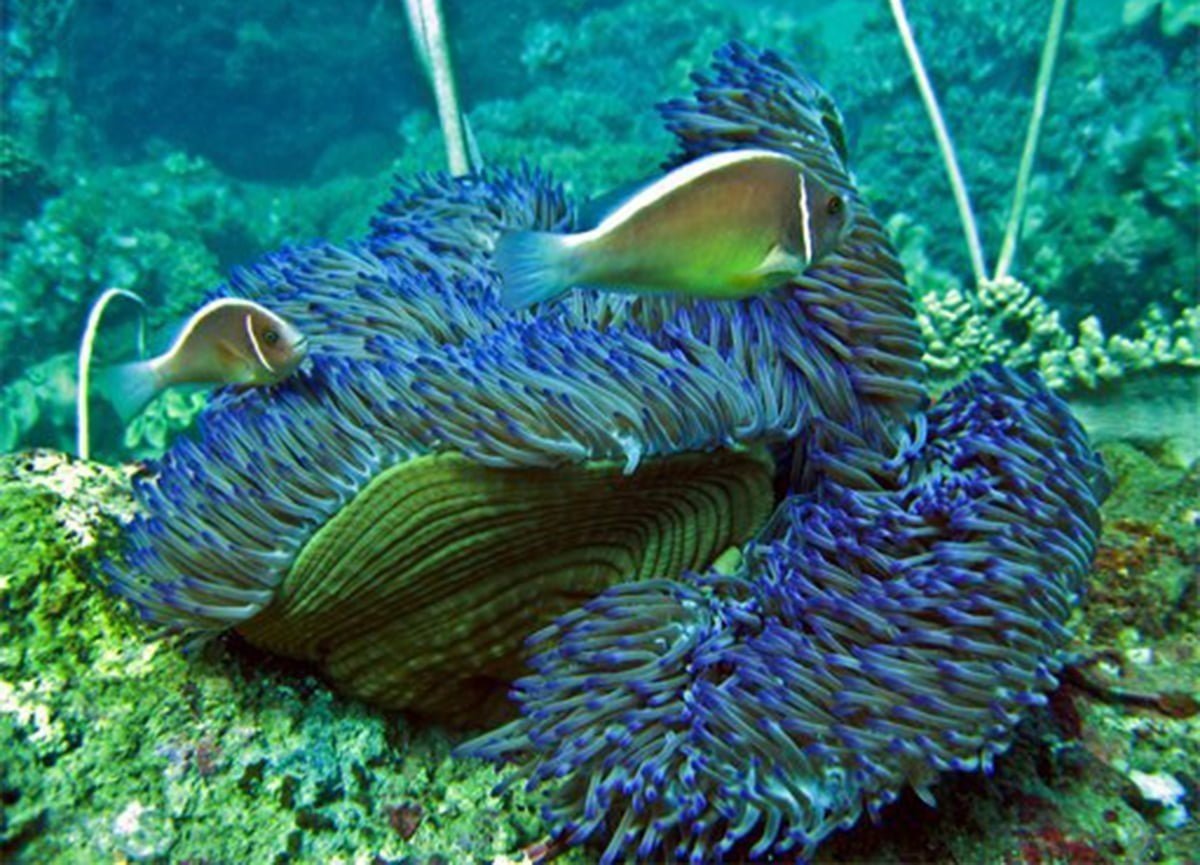
Coral reefs and seagrass beds create ideal habitats for marine species. Photo: Cu Lao Cham Marine Protected Area.
“There is no doubt about Vietnam’s extremely rich aquatic resources. The key issue is that marine biodiversity conservation does not mean turning away from economic development. On the contrary, it is the foundation of a sustainable ocean economy,” emphasized Dr. Nguyen Song Tung.
According to research, a coral reef ecosystem can generate up to USD 100 million per year, while seagrass ecosystems contribute up to USD 20 million per year, and each hectare of lagoon can yield USD 2,000 per year from seafood and tourism services.
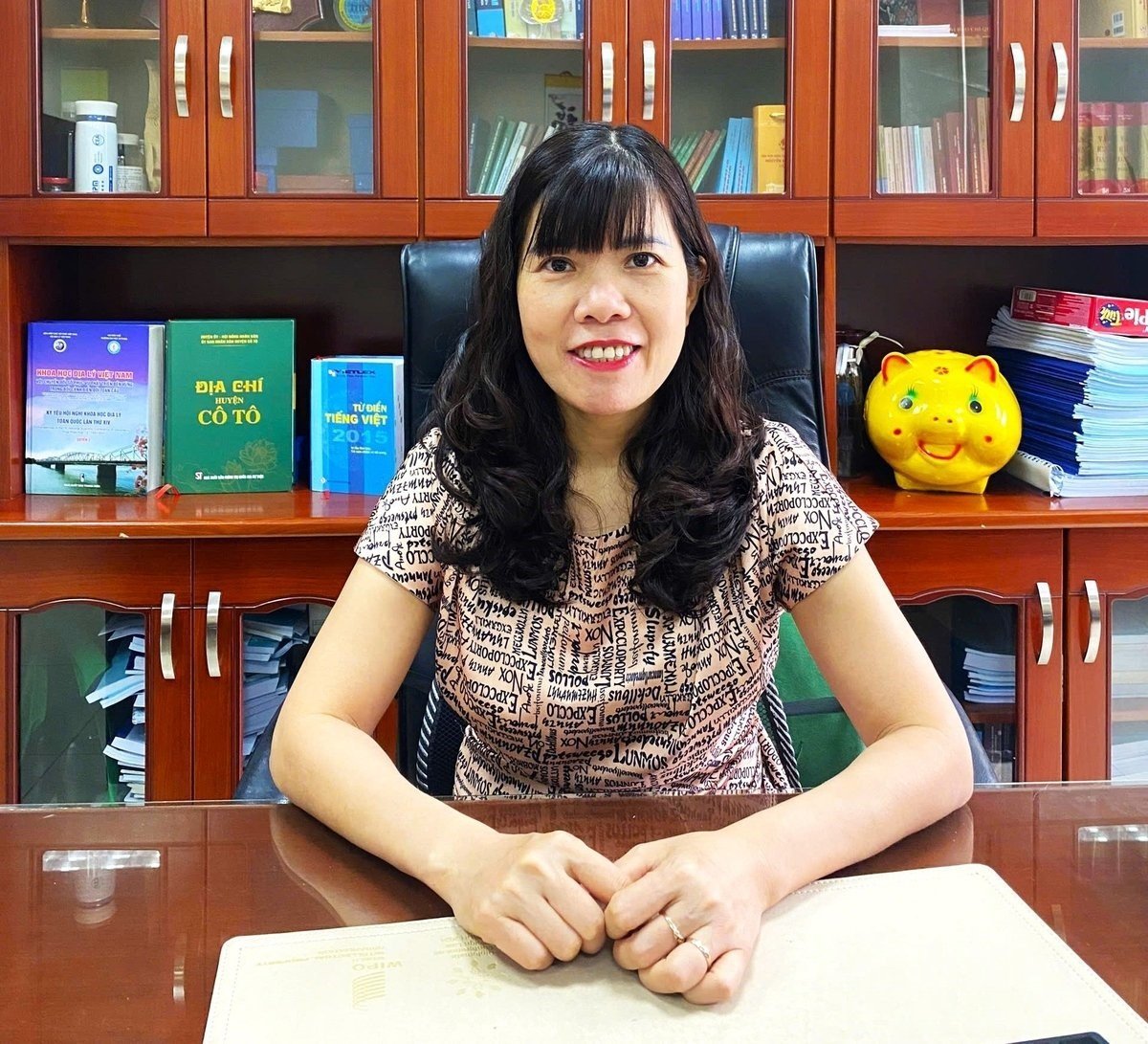
Dr. Nguyen Song Tung, Director of the Institute for Human Geography and Sustainable Development, emphasized that every action to protect the seas today is a practical contribution to Vietnam's commitment to achieving net-zero emissions by 2050. Photo: Khanh Ly.
Seagrass beds are also extremely effective "blue carbon tanks." With a carbon absorption capacity 35 times greater than that of tropical rainforests, the conservation and restoration of seagrass are considered one of the important solutions to respond to climate change.
In Vietnam, according to a study by the Vietnam Academy of Science and Technology, the organic carbon value within seagrass ecosystems is estimated at approximately 3.2 million carbon credits, equivalent to more than USD 64 million. This is a significant figure in the efforts to establish a carbon credit market and develop a green economy. This type of carbon holds high value due to its co-benefits for biodiversity conservation and above-mentioned functions.
With over 3,200 km of coastline and an exclusive economic zone spanning more than 1 million km², Vietnam is not only a maritime nation but also one of the world’s important marine biodiversity centers. According to IUCN, Vietnam ranks among the world’s top 10 marine biodiversity centers and is listed among the top 20 sea areas with the most abundant aquatic resources globally.
According to Dr. Nguyen Song Tung, in recent years, scientists and managers have recorded alarming signs. Vietnam’s marine ecosystems are rapidly declining. The area of mangrove forests in the Mekong Delta has decreased by up to 80% over the past 50 years, primarily due to conversion for aquaculture and sea reclamation. Widespread coral bleaching has reduced average coral cover in many regions to below 20%. Seagrass beds are also shrinking due to pollution and overexploitation. The sharp decline in natural aquatic resources and the increasingly smaller size of harvested fish indicate that fishing pressure is exceeding the ocean's regenerative capacity.
In recent years, Vietnam has actively participated in global initiatives to protect the oceans. As a member of the Global Ocean Alliance (GOA), the country has pledged to contribute to the conservation of at least 30% of the world’s oceans by 2030. Vietnam is also a signatory to the Convention on the High Seas and numerous international conventions on the preservation of marine biological resources.
At the national level, the Vietnamese Government has issued a National Action Plan on Ocean Plastic Waste Management by 2030. This is a strategic step to reduce plastic pollution, which is one of the leading causes of marine habitat destruction.
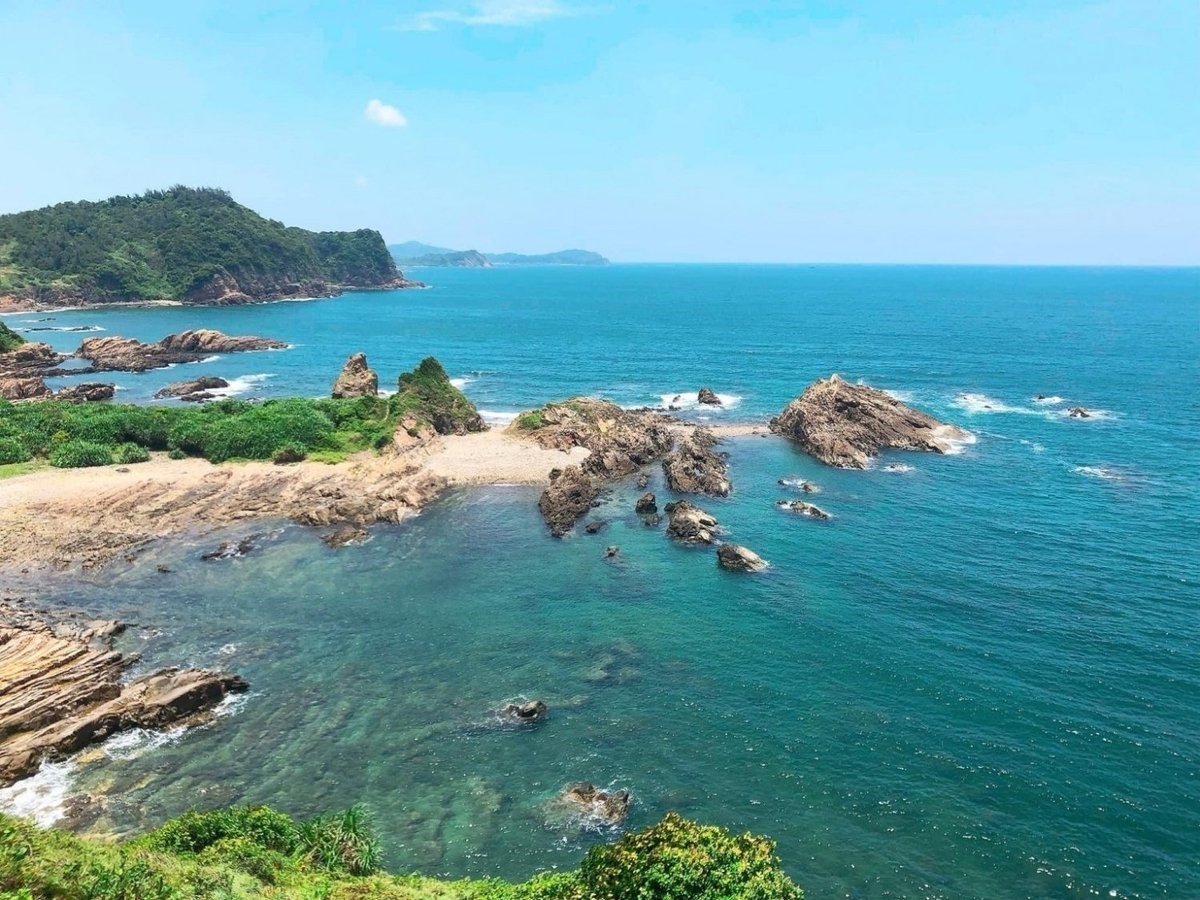
As of June 2025, 11 out of 16 marine protected areas (MPAs) planned nationwide have been established and put into operation.
To protect marine ecosystems, Vietnam has developed a network of marine protected areas (MPAs). As of June 2025, 11 out of the 16 MPAs planned have been established and put into operation, such as Cat Ba, Cu Lao Cham, Nha Trang Bay, Con Dao, and Phu Quoc. These protected areas play a pivotal role in habitat restoration, biodiversity conservation, and supporting the sustainable development of the ocean economy through responsible fisheries, ecotourism, and aquaculture.
However, compared to the scale and importance of Vietnamese waters, the proportion of protected area remains modest. There is now an urgent need to expand the network and enhance the effectiveness of MPA management.
Marine conservation cannot rely solely on policies from the Central Government or state management agencies. It requires the active participation of coastal communities, businesses, and every individual citizen.
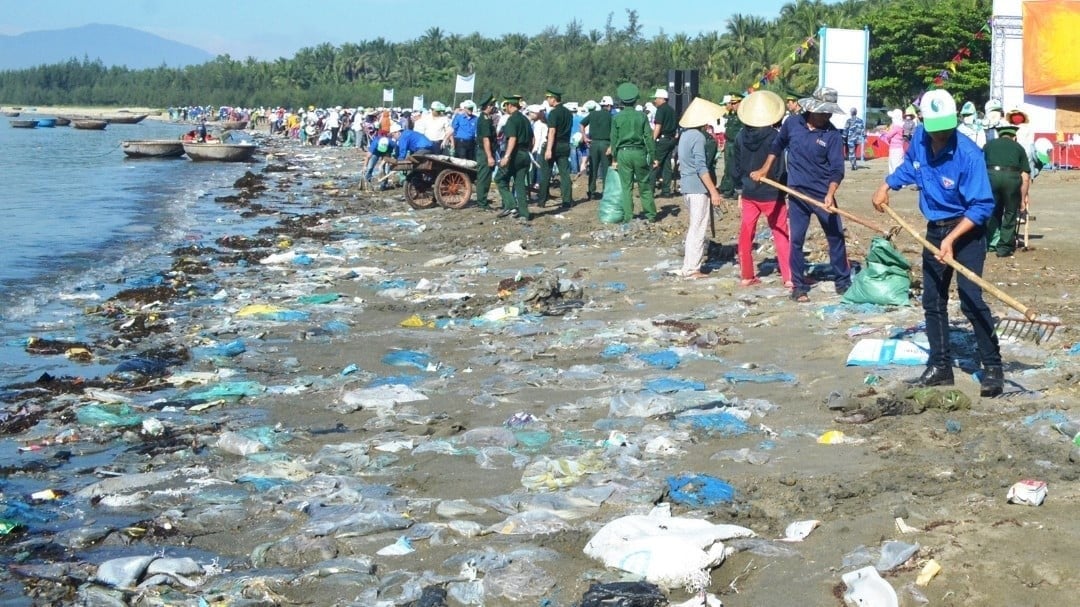
Collecting coastal waste has received widespread support from all levels of government to local communities.
First and foremost, it is essential to change the perception of conservation. Conservation should not be seen as an obstacle to development but rather as the foundation of sustainable development. The Central Resolution No. 36-NQ/TW (2018) on the Strategy for Sustainable Development of Vietnam's Ocean Economy by 2030 clearly affirms the need to transition mindset from pure exploitation to sustainable use and conservation of marine resources.
To achieve this, relevant policies and legal frameworks must be reviewed and adjusted to better align with the current context, especially in conditions of climate change and deep international integration. Key laws such as the Law of the Sea of Vietnam, the Law on Marine Resources and Environment, the Law on Biodiversity, and the Law on Environmental Protection need to be harmonized, streamlined, and made more enforceable.
Next, there is a need to enhance the participation of local communities and the private sector. Conservation cannot be the sole responsibility of the State. Coastal residents, businesses, and civil society organizations all have specific roles to play. From models of co-management in fisheries and community-based coral reef management to responsible ecotourism initiatives, all should be encouraged and supported.
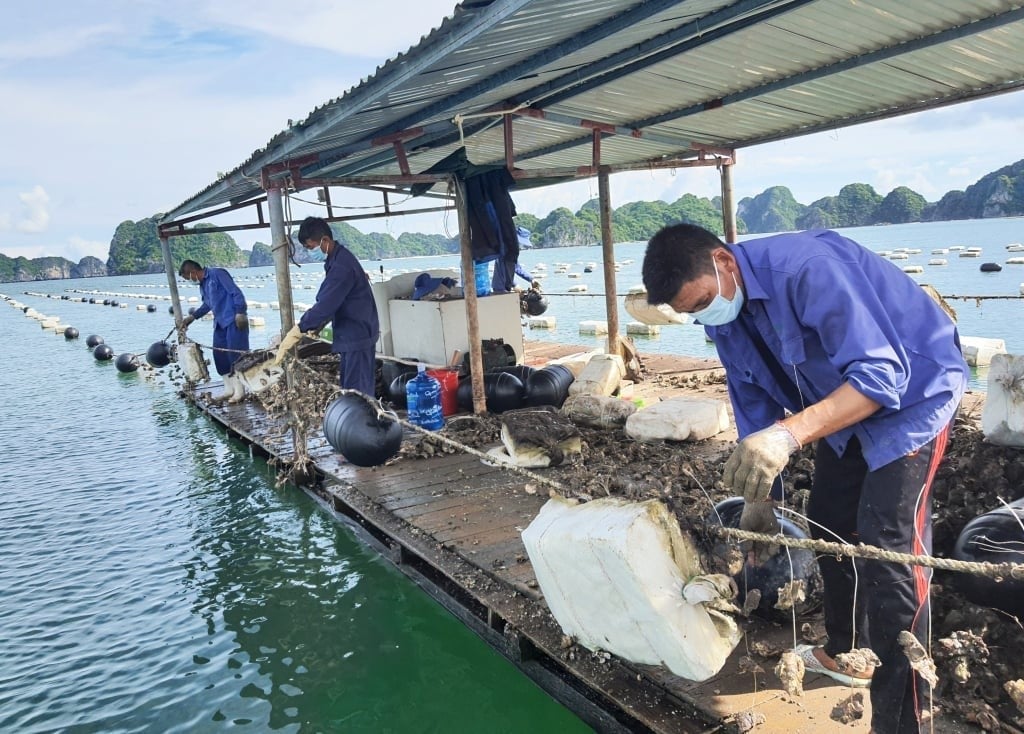
Aquaculture households in Van Don district, Quang Ninh province, have switched from using styrofoam buoys to HDPE plastic buoys. Photo: Quang Ninh Newspaper.
It is also essential to tighten control over illegal, unreported, and unregulated (IUU) fishing. Strengthening the vessel monitoring system, enhancing fisheries management capacity, and moving toward responsible fishing activities not only aim to lift the EU's "yellow card" but also to secure the future of Vietnam's fisheries sector.
Ultimately, the goal of marine conservation cannot be divorced from the objective of addressing climate change. Marine ecosystems, from coral reefs to seagrass beds, are all “green shields,” absorbing carbon and mitigating climate impacts. Every action to protect the seas today is a practical contribution to Vietnam’s commitment to achieve net-zero emissions by 2050.
Each individual can contribute by taking action, starting with the smallest actions, such as reducing the use of single-use plastics, refraining from littering in the ocean, and complying with fishing regulations. As a tourist, choose eco-friendly travel experiences. As a business, invest in sustainable fishing and aquaculture models. This is the way to contribute to preserving “treasures” in Vietnam's ocean depths.
Translated by Thu Huyen

(VAN) After three years, Project FST/2020/123 collected approximately 3,000 insect specimens, classified them into about 50 morphological groups, and identified around 40 species, including several new species.
/2025/12/01/0509-2-175427_206.jpg)
(VAN) Emission-reducing coffee areas in Lam Dong have entered the new crop with stable yields, improved quality, and a remarkably enhanced cultivation environment.

(VAN) The Institute of Agricultural Sciences for Southern Vietnam (IAS) marked its 100th anniversary in Ho Chi Minh City, celebrating a century of growth as a leading institute contributing significantly to Viet Nam’s agricultural development.

(VAN) An increasing number of livestock farms are using biogas generators to create a source of renewable electricity, helping to save costs and mitigate environmental pollution.

(VAN) Small changes in rice cultivation, from irrigation methods and straw collection to input management, are paving a new way for Vietnam's agriculture in the journey toward emission reduction.

(VAN) With the project of converting biogas into renewable electricity, Australia is both helping pig farms reduce their energy costs by up to 25% and contributing to environmental protection.
![Hue aims for Net Zero: [1] Initial steps from green transportation](https://t.ex-cdn.com/nongnghiepmoitruong.vn/608w/files/huytd/2025/11/28/0853-anh-6-giao-thong-xanh-hue-094717_940-153724.jpg)
(VAN) For sustainable development, Hue City is implementing many solutions to promote green transportation, which is an important initial step on the journey to building a Net Zero Hue.